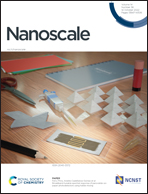Optimizing nanostructures to achieve enhanced breakdown strength and improved energy storage performances in dipolar polymers
Abstract
Polymer dielectrics have attracted ever-increasing attention for electrical energy storage applications in recent years. Typically, polymer-based nanocomposite films are adopted to obtain polymer dielectrics with high energy density but sometime suffer from the inhomogeneous distribution of fillers. In this work, enhanced breakdown strength, suppressed dielectric loss and improved energy storage performances of PVDF film are concurrently achieved via the regulation of the sub-nano free volume, without introduction of any kinds of fillers and also minimizing the uneven distribution of the local electric field. The most improved breakdown strength is up to 488 MV m−1, with an enhancement of 60% compared with that of pristine PVDF, which enables the irradiated PVDF film to exhibit an improved polarization strength and charged energy density, giving rise to a maximum polarization strength of 3.55 μC cm−2 and a charged energy density of 9.75 J cm−3. More importantly, the irradiated PVDF film exhibits a superior discharged energy density of 7.91 J cm−3 which is 261% that of the pristine PVDF film, while maintaining the charge–discharge efficiency above 80%. In addition, the alteration of experimental breakdown strength with the increase of irradiation dose is found to be inversely correlated with the size variation of free volume holes, and the theoretical simulation of local electric field distribution further proves that the breakdown strength enhancement originates from the size shrinkage of free volume holes. The adjustment of free volume provides a potentially effective way to regulate the dielectric properties and energy storage performances of dipolar polymers.



 Please wait while we load your content...
Please wait while we load your content...